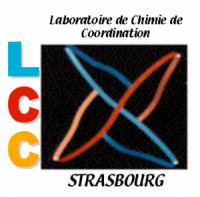1) Bimetallic and Cluster Chemistry
The group has developed various synthetic methodologies for the preparation of low oxidation-state heterometallic complexes containing ligands such as CO, CN, isonitriles, phosphines, hydrocarbons,… often involving the application of the isolobal analogy, and the use of assembling, short-bite ligands. Reactivity studies include metallosite selectivity (metal recognition) and/or cooperativity effects between adjacent metal centres (synergistic effects). Applications range from the preparation of hybrid materials (sol-gel route) and of new heterogeneous bimetallic nanocatalysts.
2) Functional Ligands, Hemilability, Metal Complexes and Applications.
The development of new polytopic phosphorus ligands and of their metal complexes has led to studies involving selective metal coordination, dynamic and hemilabile behaviour, chirality (Ru, Rh, Pd, Pt,..). In addition to the fundamental aspects of this research, applications to the reversible coordination of small molecules (e.g. CO, CO2) and to homogeneous catalysis (hydrogenation-transfer, hydroformylation) have been reported.
Furthermore, phosphino-enolate complexes have revealed versatile applications in homogeneous catalysis: catalytic telomerization of CO2 and butadiene (Pd), ethylene oligomerisation (Ni), alcane activation (Rh) and hydrogenation-transfer (Ru).
Using silicon ligands in bimetallic chemistry has resulted in numerous, unexpected developments, including the discovery of the hemilabile behaviour of alkoxysilyl ligands, new metal-silylene complexes, the migration of silyl groups from one metal to another and catalytic applications to the dehydrogenative coupling of stannanes, the co-oligomerisation olefins/CO and to sol-gel chemistry.
3) N-Heterocyclic Carbene Chemistry
N-heterocyclic carbenes (NHC) have become ubiquitous ligands in organometallic and coordination chemistry and in homogeneous catalysis. Their metal complexes attract increasing interest because of their broad scope in terms of synthesis, bonding and applications, in particular in catalysis.
4) Quinonoid Zwitterions: Synthesis, Coordination Chemistry, Deposition on Surfaces and Electronic Properties
A new class of potentially antiaromatic 12 p-electron zwitterionic organic quinonoid dyes was discovered in 2002. Their unprecedented electronic structure and properties have led to numerous developments in molecular chemistry and to fruitful collaborations with physicists, in particular for the tuning of the electronic properties of their self-assembled thin layers on various metal surfaces.
5) Homogeneous Catalysis
Selected relevant aspects include:
* Isolation of rare monohapto-allyl Pd(II) complexes, with enhanced reactivity compared to the ubiquitous h3-allyl complexes, and of direct relevance to a number of catalytic transformations involving allyl intermediates (Organometallics 2001, 20, 2966; J. Chem. Soc., Dalton Trans. 2003, 507).
* Conversion of CO2 into higher added value lactones by telomerization with butadiene, using a Pd(II) catalyst which was the first metal complex to allow reversible CO2 fixation under ambient conditions through C-C bond formation (J. Am. Chem. Soc. 1981, 103, 5115; J. Am. Chem. Soc. 1988, 110, 3207). See Chem. Rev. 1988, 88, 747.
* Alkane activation with phosphinoenolate Rh(I) complexes which are soluble in neat alkanes (Organometallics 1996, 15, 5551).
* Synthesis of very active Ru complexes for hydrogenation transfer of ketones using functional phosphinooxazoline ligands (J. Chem. Soc., Dalton Trans. 1999, 589).
* Synthesis of homogeneous Fe-Pd and Fe-Ni bimetallic catalysts which were the most active catalysts known for the dehydrogenative coupling of stannanes (see Chem. Rev. 2000, 100, 3541).
* Pd-promoted coupling of ethylene, CO and functional monomers (Angew. Chem. Int. Ed. 2000, 39, 2867).
* Double C-Cl activation of CH2Cl2 leading to transfer of the CH2 group to phosphorus (Chem. Commun. 2009, 890; Organometallics, 2015, 34, 2255).
* Ethylene oligomerization: a long-standing collaboration with the Institut Français du Pétrole (IFP Energies nouvelles), has focused on selective catalysts for the oligomerization of ethylene (Acc. Chem. Res. 2005, 38, 784; Chem. Commun. 2014, 50, 1398-1407 (Feature article)).
